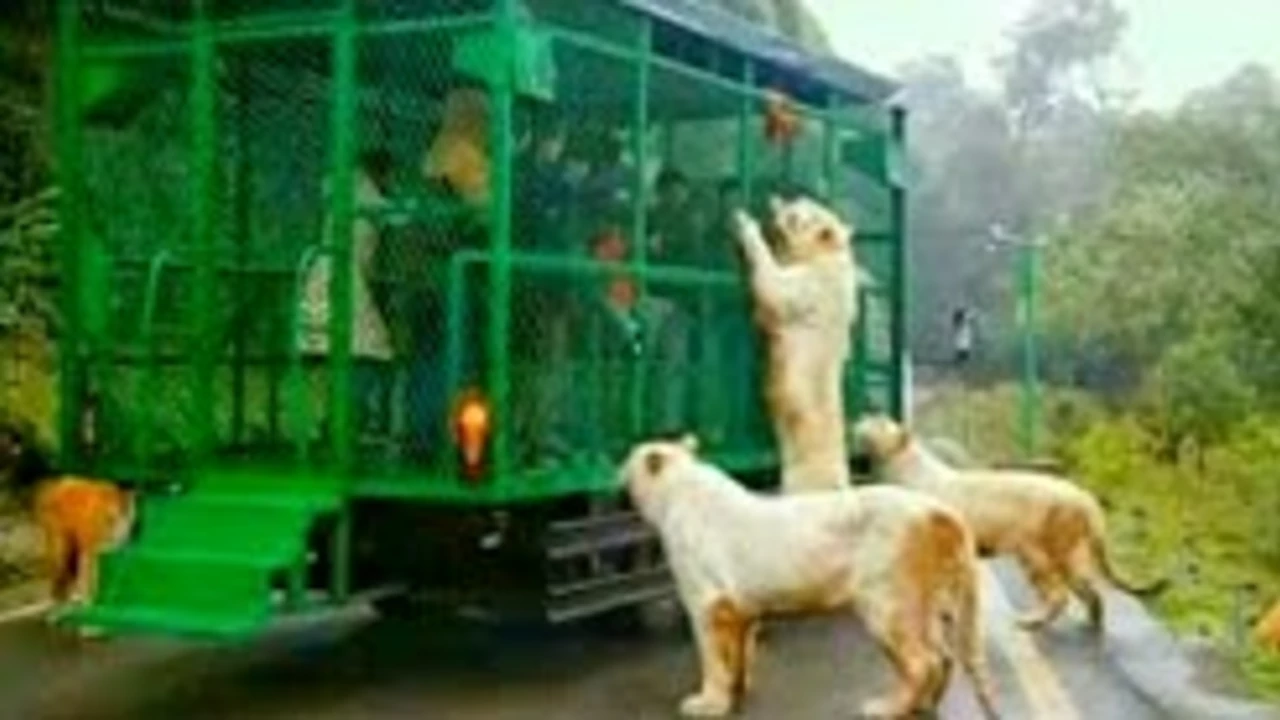



Zoos are a beloved part of childhood. They house a wondrous variety of creatures that would otherwise remain unseen, allowing children and adults alike to marvel at the sheer biodiversity of our planet. But don't you ever wish you could see them in their natural habitats, free instead of confined within the dull, grey bars of their cages? This begs the question – are zoo cages bad for animals? In this narrative, we will dive into the implications of captivity on these beautiful creatures.
Confinement isn't just the physical restriction of movement. It spells a much larger picture encompassing the effects on an animal's emotional and mental well-being. Some days, I feel a kinship with these detainees inside their enclosures - maybe we're all just animals trapped within the cages of our modern lifestyles, don't you think? Thoughts for another day perhaps, let's get back on track!
A large issue with zoo cages is their size. In the wild, animals have endless expanses of land, sea, or sky to roam freely. They experience a plethora of natural environments and stimuli. In sharp contrast, a zoo cage is profoundly smaller. It's like being told, "hey, from now on, you're living in your closet." I don't know about you, but I sure don't want to discover Narnia every time I need to scratch my back!
Space deprivation has the potential to cause significant physical and psychological harm to animals. Limited room to move around can lead to obesity and a host of other health problems. It's not unlike when I decide to binge-watch my favorite TV show and find myself unable to stop consuming popcorn. Except, animals living in confinement don't have the choice to get up and work it off. Could you imagine the horror?
Another critical aspect of zoo cages is the disruption of social configurations. Animals are often isolated, either singly or in unnatural groupings. This is equivalent to us living without our family, our friends, or any form of social interaction. And no, talking to plants doesn't count! Picture the loneliest you've felt, magnify it by a hundred, and you might get close to understanding their predicament.
Confinement within cages affects an animal's behavior to a worrying degree. Signs include pacing, self-mutilation, and circling – symptoms that signify severe distress in the animal kingdom. Do you remember moving back and forth in your room when you were anxious about that important interview? Pacing in animals is an augmented version of this anxiety, over and over, every single day. It's heartbreaking, and I speak from the experience of having seen it first hand during one of my numerous zoo visits.
The argument for zoos is they serve the dual purpose of education and conservation. However, the question to be asked is how effective they are in these roles. Do we accomplish educational goals when most visitors spend mere minutes at exhibits, often without even reading the information boards? The next time you're at a zoo, try asking the next person to learn one fact about the animal they just viewed. I’m willing to bet my collection of Star Wars memorabilia on the likely blank face or general ignorance you're about to encounter.
Demonizing zoos isn't the purpose of this article. Many modern zoos have taken steps to improve living conditions for their animals, moving away from traditional cages to more naturalistic enclosures purportedly designed to mirror wild habitats. Yet, it's crucial to remember that these are still controlled environments with limited space, devoid of the complex interactions these creatures would naturally experience. Basically, it's better, but it's like choosing between a chocolate eclair and a bag of carrots - one option is just slightly less bad for you.
An alternative to zoos are wildlife sanctuaries and rehabilitation centers that prioritize animal welfare over everything else. These institutions provide rescued animals with necessary care while protecting them from poaching and habitat destruction. Remember, visiting a sanctuary or rehabilitation center is akin to observing a person recuperating in a hospital, not going to a blockbuster movie. So, drop the popcorn and soda and bring your quiet voices and gentle manners – these animals deserve it.
We, as potential visitors, wield enormous power. By choosing to support institutions that prioritize animal welfare, we effectively strengthen the move towards better treatment for these creatures. If we put our foot down and refuse to endorse captivity that doesn't respect animal rights, we can pressure zoos to improve conditions. Every time we debate whether or not to visit a zoo, let's keep in mind the voiceless ones behind the bars. Perhaps then we might decide, "Hey, maybe we should go see that newly opened bird sanctuary instead!"
At the end of the day, it's not just about the physical cage, but the invisible one – the one that binds their lives into routines and worlds far reduced from their wild counterparts. The question then is not just 'Are zoo cages bad for animals?' It's about whether we can redeem our footprint on their existence. Each one of us has the power to make a difference; it's time we started stepping up to that responsibility.